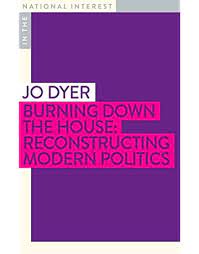- I was utterly blown away by this small, beautiful novel. It is very meditative, reflective and insightful, and a sheer joy to read.
- The narrator and her mother travel to Japan for a holiday. They are not named, and there are no street names, train station names, hotel or restaurant names divulged. There is no localisation at all. At one point she refers to the busy Shibuya crossing, but that's it. Keeping all things hazy is the point. We know, however, that the mother is Asian, and grew up in Hong Kong, and her daughter was born in Australia. The husband/father is never mentioned.
- The novel is written in exquisitely beautiful, clear and simple prose. It is unadorned. And, I must add, superbly designed and produced by publisher Giramondo. There are echoes of Jen Craig’s wonderful Panthers and the Museum of Fire. Time periods are blended, guided by whatever comes to mind, and thoughts dotted with companion reminders '..as I said to my mother..' The mother is less inclined to talk or reflect and the daughter withholds, though in contrast she is a very reflective person. '…I wanted to say…but I found I could not…so I said nothing…'
- One character who is named is Laurie, her current partner. They holidayed in Japan when they were university students. We don't know what she studied at university, or what university it was. We also don't know what Australian city she grew up in. But we soon come to appreciate that all this detail is irrelevant.
- The daughter and her mother visit an art gallery in Tokyo. There is a Monet exhibition and the mother is a bit befuddled, showing no enthusiasm at all. But the daughter is entranced. As the holiday proceeds she contemplates the meaning of art and its power. Perhaps, she reflects, this is what separates her from her mother. It isn't just generational. It's the spiritual distance between them. The author seems to be suggesting Ancient Chinese wisdom versus modern Western ‘enlightenment’. But that's probably just my pedestrian view.
- There are many fascinating and highly meaningful episodes. She was a committed student, approaching her studies like she did every other part of her life. She was hungry to devour every book and play mentioned in her class. But all the same, I felt that there was something else, something fundamental, that I did not understand. She house-sat for her lecturer for two weeks, and when I returned home, I was, for a time, confused.
- During their short visit to Osaka she hikes on a walk trail in Japan and stays overnight, leaving her mother in a small inn near the Osaka station. Au offers a beautiful paean to the power of nature. The deep lakes and the dangerous rapids unsettle our narrator. Water seems to be everywhere, ominous and unwelcome. It constantly rains over their three week holiday period. The trip occurs in October in Autumn. (Personally I was happy that there was no sentimental gushing about flowers and especially cherry blossoms!).
- There are many other delightful episodes and musings packed into this 100 page gem. It's a must read.
(A note from the publisher: This book won The Novel Prize which is a biennial award for a book-length work of literary fiction written in English by published and unpublished writers around the world. The prize recognises works which explore and expand the possibilities of the form, and are innovative and imaginative in style....The prize had over 1500 submissions worldwide and Cold Enough for Snow won unanimously.)







